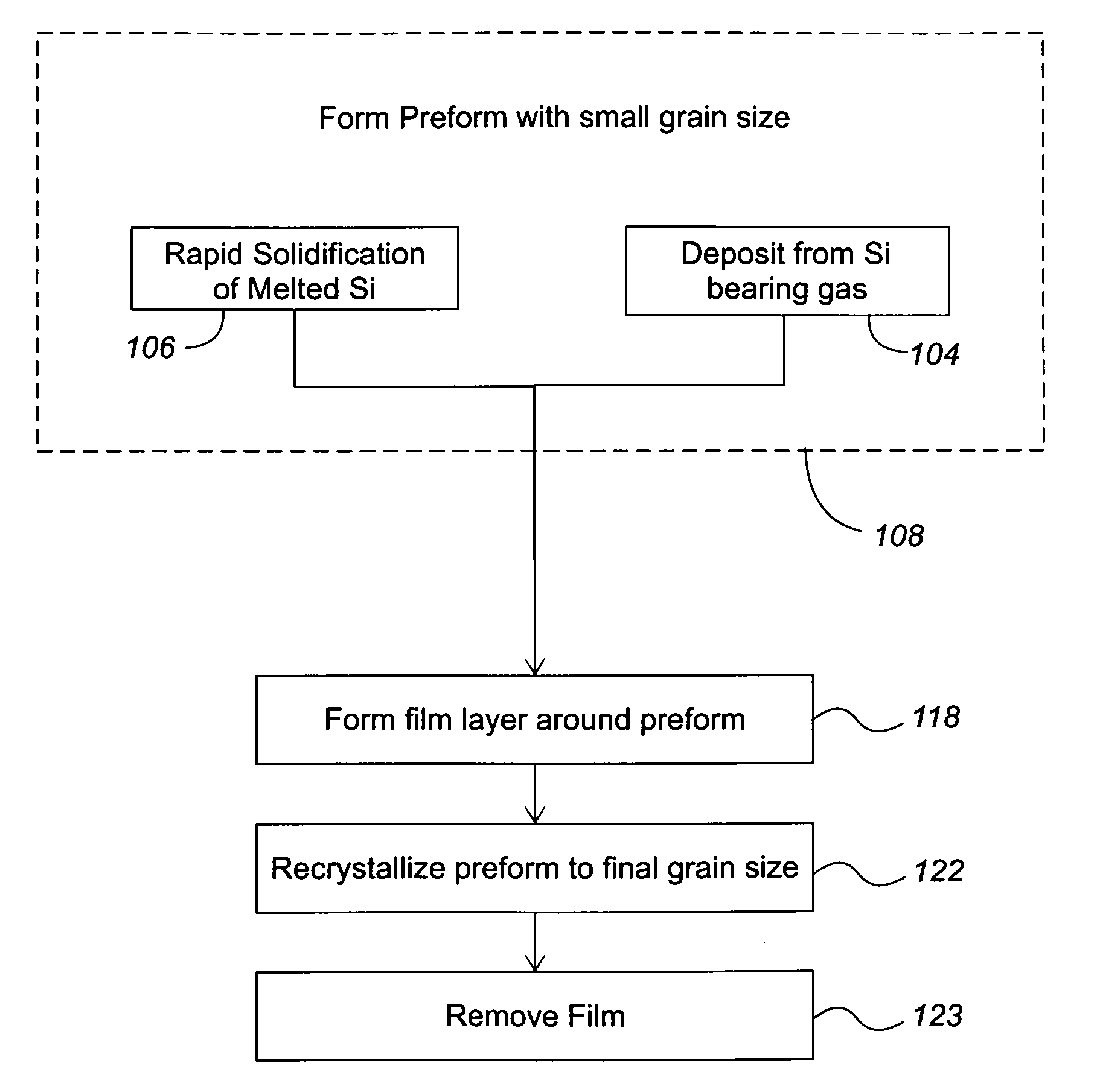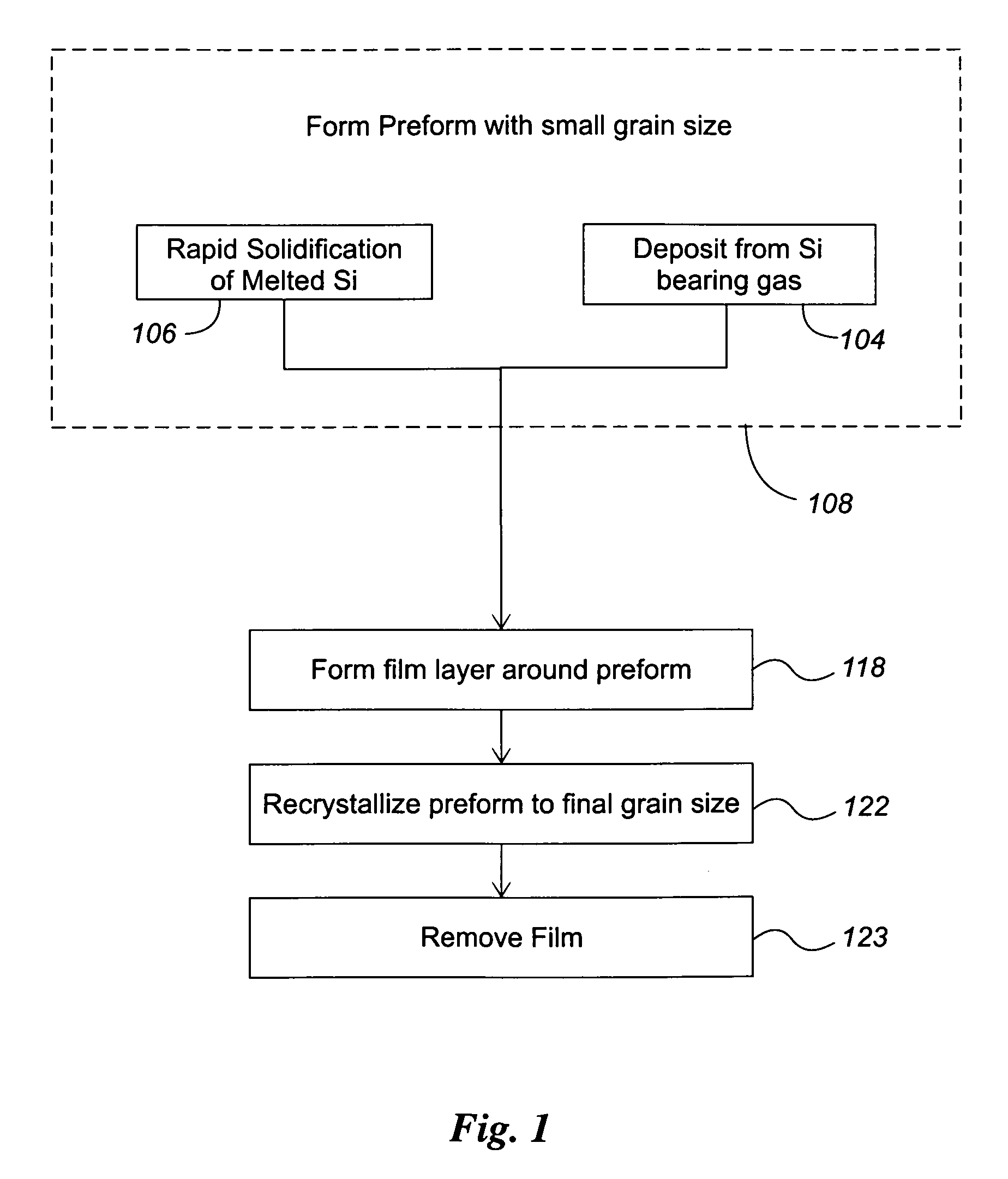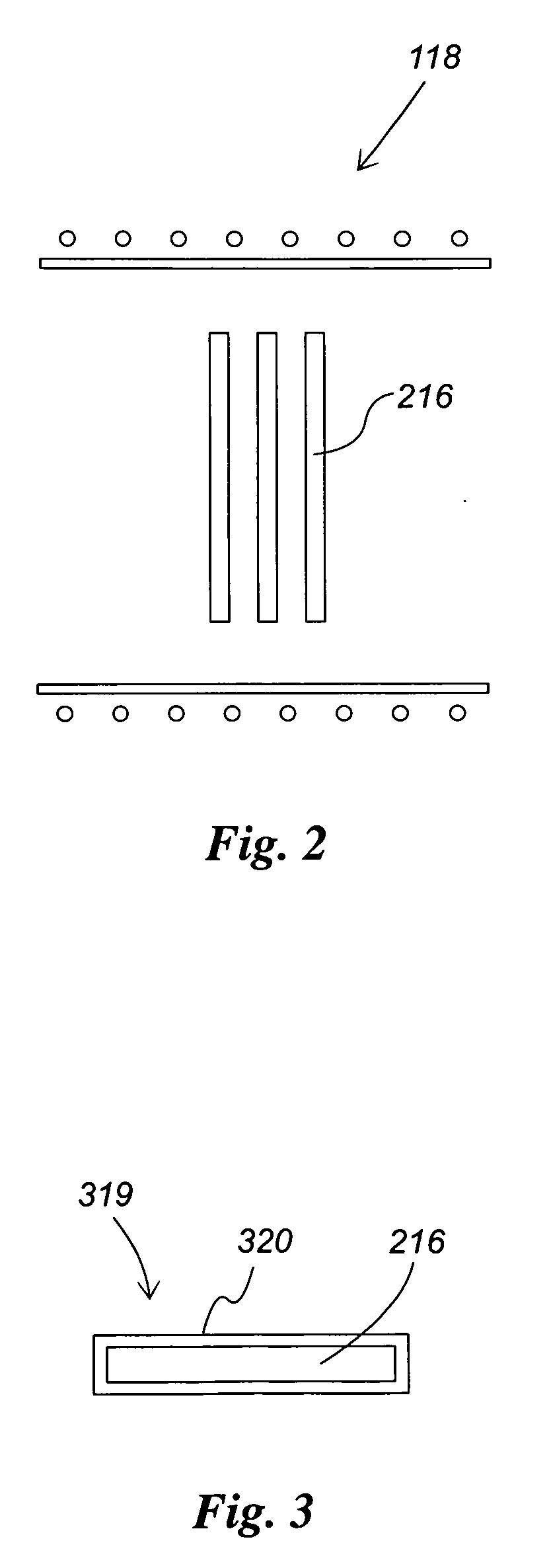Recrystallization of semiconductor waters in a thin film capsule and related processes
- Summary
- Abstract
- Description
- Claims
- Application Information
AI Technical Summary
Benefits of technology
Problems solved by technology
Method used
Image
Examples
Embodiment Construction
[0043]One approach disclosed herein, is to manufacture silicon wafers with no sawing required, by first creating the geometric form of the wafer and then, in a separate process, creating the desired crystallographic structure. (The sequence is the reverse of ingot methods where the crystallographic structure is created and then, through sawing, the geometric form is created).
[0044]An overview of a process is shown with reference to FIG. 1 in flowchart form, and with reference to FIGS. 2 and 3 at various stages of production. As shown in FIG. 1, the geometric form of the wafer may be created in step 108. For instance, rapid solidification techniques 106 can be used, as discussed below. Alternatively, chemical vapor deposition techniques 104 can be used. This results in an original wafer having an average grain size of less than about ten mm2, and typically, less that about one mm2.
[0045]As shown schematically in FIGS. 2 and 3, in an important step, a super-clean, thin film capsule 32...
PUM
 Login to View More
Login to View More Abstract
Description
Claims
Application Information
 Login to View More
Login to View More - R&D
- Intellectual Property
- Life Sciences
- Materials
- Tech Scout
- Unparalleled Data Quality
- Higher Quality Content
- 60% Fewer Hallucinations
Browse by: Latest US Patents, China's latest patents, Technical Efficacy Thesaurus, Application Domain, Technology Topic, Popular Technical Reports.
© 2025 PatSnap. All rights reserved.Legal|Privacy policy|Modern Slavery Act Transparency Statement|Sitemap|About US| Contact US: help@patsnap.com



